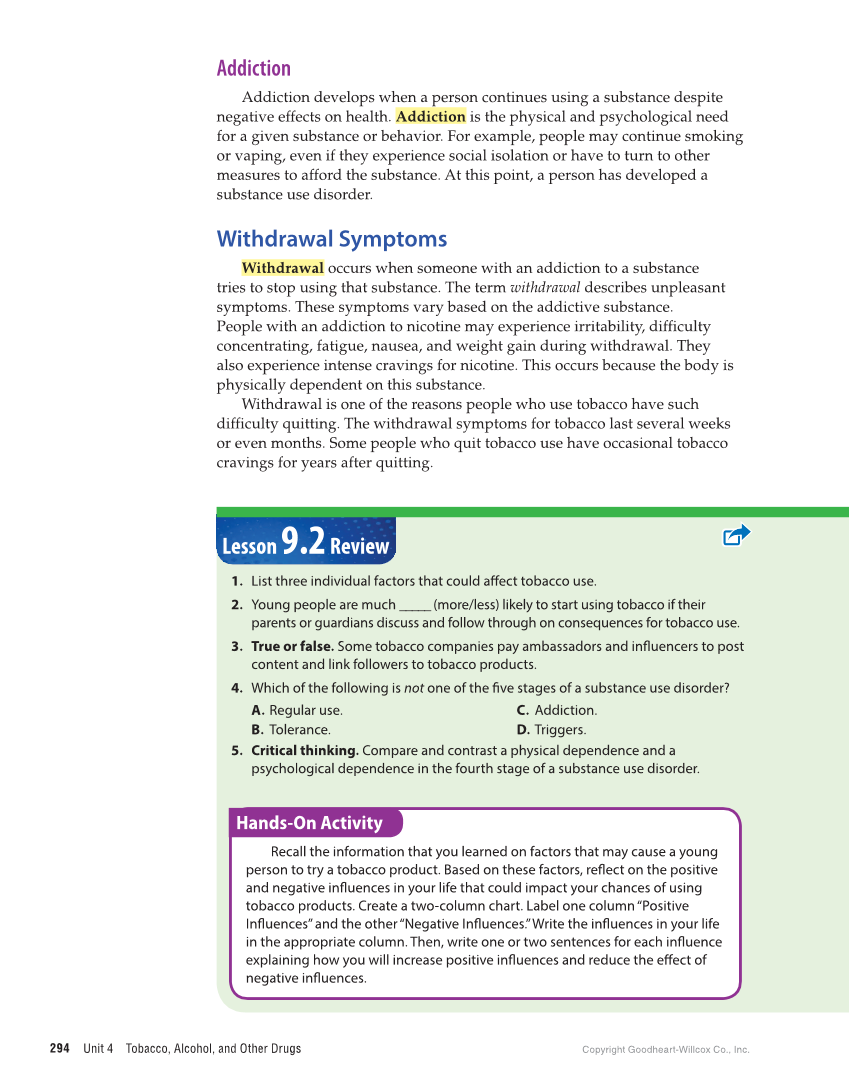Unit 4 Tobacco, Alcohol, and Other Drugs Copyright Goodheart-Willcox Co., Inc. 294 Addiction Addiction develops when a person continues using a substance despite negative effects on health. Addiction is the physical and psychological need for a given substance or behavior. For example, people may continue smoking or vaping, even if they experience social isolation or have to turn to other measures to afford the substance. At this point, a person has developed a substance use disorder. Withdrawal Symptoms Withdrawal occurs when someone with an addiction to a substance tries to stop using that substance. The term withdrawal describes unpleasant symptoms. These symptoms vary based on the addictive substance. People with an addiction to nicotine may experience irritability, difficulty concentrating, fatigue, nausea, and weight gain during withdrawal. They also experience intense cravings for nicotine. This occurs because the body is physically dependent on this substance. Withdrawal is one of the reasons people who use tobacco have such difficulty quitting. The withdrawal symptoms for tobacco last several weeks or even months. Some people who quit tobacco use have occasional tobacco cravings for years after quitting. Lesson 9.2 Review 1. List three individual factors that could affect tobacco use. 2. Young people are much _____ (more/less) likely to start using tobacco if their parents or guardians discuss and follow through on consequences for tobacco use. 3. True or false. Some tobacco companies pay ambassadors and influencers to post content and link followers to tobacco products. 4. Which of the following is not one of the five stages of a substance use disorder? A. Regular use. B. Tolerance. C. Addiction. D. Triggers. 5. Critical thinking. Compare and contrast a physical dependence and a psychological dependence in the fourth stage of a substance use disorder. Recall the information that you learned on factors that may cause a young person to try a tobacco product. Based on these factors, reflect on the positive and negative influences in your life that could impact your chances of using tobacco products. Create a two-column chart. Label one column “Positive Influences” and the other “Negative Influences.” Write the influences in your life in the appropriate column. Then, write one or two sentences for each influence explaining how you will increase positive influences and reduce the effect of negative influences. Hands-On Activity
